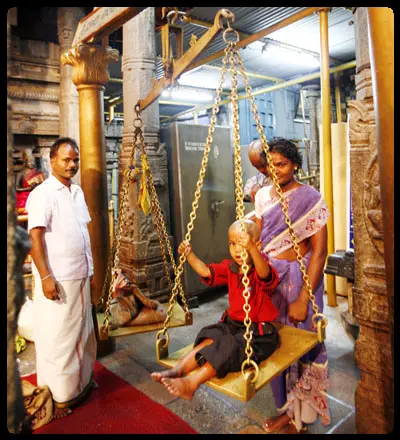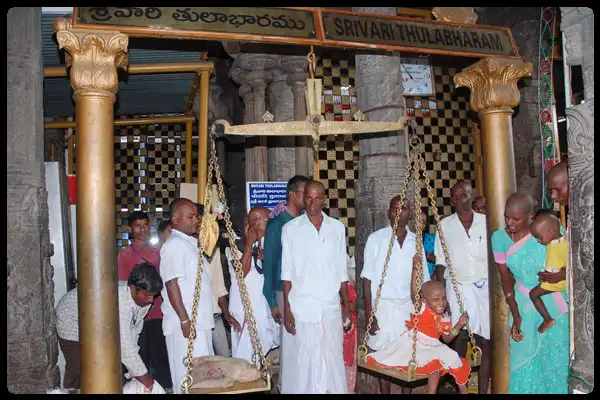Tulabharam significance, Process, Tirumala
Tulabhram – A sacred Hindu ritual of gratitude and fulfillment
Tulabharam Information
In ancient Hindu tradition, there is a beautiful ritual known as “Tulabharam“, which has a deep significance for devotees who want to express their gratitude to the divine and fulfill their wishes
Tulabharam practice dates back to Dwapara age and this time-honoured tradition is reverently observed till date.
The Essence
The essence of Tulabharama is the sincere desire of the devotees to give something equal to their or their childrens weight in return for the blessings bestowed by the Lord.
Finally, when their hardships are over and their dreams come true, devotees come forward to perform this holy devotional ritual at temples like Tirupati Tirumala Devasthanam.
The Process for Tulabharam
The process of performing Tulabharam involves weighing offerings of equal weight to the offerer, be it rice, sugar, jaggery, alum jaggery, cash and even other grains.
In the past, people carried many objects to show their gratitude. But changing times have made the process much easier.
Devotees can now simply sit on the weighing scale and pay the equivalent of the chosen offering per kilo, with the temple authorities generously giving the same weight of the chosen items

The Importance of Tulabharam
The importance of Tulabharam goes beyond mere physical provision; It symbolizes the devotee’s willingness to give back to the divine with an open heart.
It represents the realization that their desires have been fulfilled not only through their efforts but also through Divine kindness.
Thus, the act of giving something equal to one’s weight is an act of humility, gratitude, and surrender to a higher power that manifests itself in power.
Tulabharam in Tirumala

Now, devotees at Srivari Temple no longer need to carry rice bags or jaggery for the Thulabharam ritual.
Traditionally, offerings were made based on the weight of individuals in rice, jaggery, sugar, sugar candy, and coins.
The TTD has made the Thulabharam procedure in Srivari Temple very simple, making it convenient for both devotees and the temple.
Under the new procedure, the TTD accepts offerings only in the form of cash and at fixed rates.
For example, a kilogram of ten paisa coins is valued at Rs. 50, while Rs. 5 coins are priced at Rs. 555 per kilogram.
The valuation per kilogram includes Rs. 27 for rice, Rs. 34 for sugar, Rs. 27 for jaggery, and Rs. 30 for sugar candy.
If you bring coins, they will be accepted, and you will be requested to place them in the Srivari Hundi after they are weighed.
All information about Sri Venkateshwara Swami.
.






